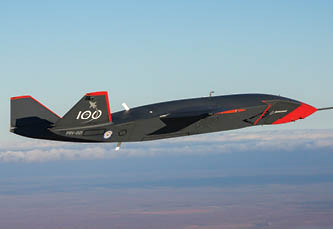Humans have been dreaming of machines that could carry out tasks that only humans could do for thousands of years – ancient Greek legends such as Talos describe artificial beings with human (or superhuman) capabilities. The Greek philosopher Aristotle developed the syllogism, a method of formal deductive reasoning which was used by AI pioneers. However, the term “Artificial Intelligence” wasn’t coined until 1955 by John McCarthy in the title of a proposal for a summer research project, known as the Dartmouth College Summer AI Conference. Not long before this, Alan Turing proposed his Imitation Game (better known as the Turing Test) in a 1950 paper titled “Computing Machinery and Intelligence”.
A request to Microsoft Co-pilot to define intelligence came up with a list of eight different kinds of intelligence, ranging from basic cognition through to spatial and emotional intelligence. A broader search on the internet uncovered many more definitions, with one paper listing more than seventy.
If there is no consensus definition of intelligence, how can we hope to define Artificial Intelligence? AI is a buzzword – during a recent conversation on the subject a person referred to AI as “Advertising Intelligence” – it seems if your product or solution doesn’t claim to have AI inside, then it is second rate at best. Not only that, but AI is an overloaded term, it is not a single technology. There are scores of different technologies – a recent report prepared for the Royal Society listed over seventy different AI technologies, and that was incomplete!
AI has been predicted to revolutionise aviation in many ways, some of which are already occurring. Despite the promise, there are many challenges in adopting AI in aviation, many of which are discussed in the EASA AI Roadmap7 and associated Concept Paper8. These documents emphasise the importance of AI trustworthiness, explainability, and human factors and oversight., An additional challenge is the need for engineers and others with relevant skills – a recent study highlighted the limited focus on AI machine learning in aviation related engineering courses, noting there is a misalignment between curricula and stated industry goals for AI adoption.
Recent headlines notwithstanding, the number of fatal accidents per million flights has been trending down, from around 3.3 in 1966 to 0.12 in 2024. There are several factors behind this achievement, including significant advances in aircraft technology as well as effective regulation, a strong safety culture and improvements in training. However, human actions remain the most common contributor to aviation accidents.
Meanwhile, forecasts by Boeing show worldwide demand for 674,000 new commercial pilots over the next 20 years, while many airline pilots are reaching the mandatory retirement age, creating a significant gap in the workforce.
There are therefore two main drives for improvements in pilot training – improving safety and improving efficiency. These are not mutually exclusive – appropriate use of AI technologies can address both drivers simultaneously.
Current training regulations are based on traditional methodologies, but an initiative known as Evidence-Based Training (EBT) aims to further improve aviation safety by a new approach to pilot training that focuses on developing key competencies based on operational data. EBT emphasises the development of a range of core competencies, rather than focusing solely on individual events or manoeuvres. EBT competencies that pilots must demonstrate include communication, leadership and teamwork, problem-solving, decision-making, situational awareness and workload management. Training and assessment are based on evidence collected from actual flight operations and training environments.
AI can significantly enhance EBT by leveraging data analysis, personalised training, advanced simulations, competency assessment, and resource optimisation. AI can process vast operational data sets to identify training needs and predict risks. It can create personalised training plans and provides real-time feedback.
Having an AI assisting with assessing trainee pilot performance can reduce the workload for instructors and lead to more effective debriefing. Augmenting analysis of technical data with biometric data capturing trainee cognitive performance and behaviours can provide additional insights towards improved performance.
While automation has helped reduce accident rates, it can also lead to a decline in manual flying skills due to less practice. Unexpected automation issues can have serious consequences. Over-reliance on automation can lead to a loss of situational awareness and ineffective monitoring. As AI begins to be integrated into aircraft, pilots will need to thoroughly understand this technology, just as they do current aircraft systems.
Current automation technologies used in aviation are essentially deterministic – their behaviour is explicitly programmed by a human. On the other hand, certain kinds of AI, such as Deep Neural Networks are built from statistical models with a vast number of parameters, making them hard or even impossible to understand – such a model is called a “black-box”. A more general term is the alignment problem, which captures the challenge of ensuring that the goals and behaviours of an Artificial Intelligence are aligned with the intentions and values of its human creators. AI behaviours must be explainable, especially when they are used to make important decisions. The quest for explainable and interpretable AI is a significant area of research, .
While achieving and maintaining skills in the civilian arena is already complicated, training for military pilots adds a whole new layer. Additionally, Air Forces face the same pressures as airlines in terms of recruitment and a shortage of instructors. It is essential for Air Forces to increase the speed and effectiveness of training to be prepared for contingencies that may occur with little warning.
In addition to being trained to fly an aircraft, military pilots must be trained to “fight the aircraft” – to operate sensors, communications, weapons and countermeasures in complex tactical scenarios, usually as part of a package of other aircraft and assets. In order to succeed in these complex missions, pilots and other crew members are trained by interacting with complex simulation software that represent other entities in a scenario, or by human role players acting as other entities. AI technologies such as Agents can assist by providing more realistic entity behaviours for trainees to test their skills against. Voice recognition and Natural Language Processing can provide realistic interaction with simulated entities via simulated radio calls or even datalink text commands.
Generative AI can analyse tactics from previous missions, including live exercises, to generate more complex yet realistic training scenarios. This will include scenarios that represent the use of AI by opposing forces, a situation that will become common in the near future.
Technologies such as Physics Informed Neural Networks, combining physics equations with Machine Learning techniques, can generate models of platforms for which data is limited or not readily available.
Data from live and virtual training sessions can be analysed to identify patterns and trends which signal the need to take action, either at the individual, class or higher level. Using machine learning to analyse trainee performance can identify specific areas needing to be addressed that may otherwise be overlooked. Longitudinal analyses can identify a need to address issues in the training system itself. These capabilities need to keep the instructor in the loop.
Using AI augmented simulation techniques to capture expert performance in complex scenarios can be used to preserve expertise that would otherwise be lost when an individual retires from service. This information can also be used as a guide against which trainee performance can be assessed, enabling instructors to home in on the essential issues for an individual trainee more efficiently and effectively.
The same challenges for the implementation of AI for the civil aviation sector apply, but with added complexity. The security dimension complicates sourcing data and how trained AI models can be delivered from one country to another. This is an important factor when it comes to AI that is used for Human Machine Teaming, including decision support. The AI needs to reflect the ethics, doctrine, techniques, tactics and procedures of the user, not of the developer.
This highlights the criticality of sovereign capability in defence AI applications. To ensure AI is trustworthy, explainable and interpretable to Australian Defence personnel, it should be developed by Australians working in collaboration with the Australian Defence Force. Only by strong collaboration between Australian defence, academia and industry can AI be safely and effectively deployed by our military.
As we have seen, Artificial Intelligence is a technology that has been in development for decades, and only recently has it started to realise the potential that it was claimed for it many years ago. AI is not a single technology, but a variety of approaches to solving problems that previously required humans to solve. The use of AI for training both civilian and military pilots has already started and is expected to lead to increased safety and more effective operations, however many challenges remain. It’s early days yet, as AI continues to evolve, its role in training will undoubtedly expand, ensuring that the next generation of pilots is better prepared for the challenges of modern aviation.
Author Philip Swadling is the Chair of Simulation Australasia, the peak body for simulation professionals in the region. He is also Technical Director, Avionics with Thales in Australia and Deputy Technical Director of the global Thales Training & Simulation business. Philip has over thirty years’ experience in the development and technical management of defence systems projects, with the majority of that time spent in simulation and aerospace related activities. Philip is an Industry Fellow at the University of Technology Sydney and an advisory board member at the Performance and Expertise Research Centre at Macquarie University.
Disclaimer: The opinions expressed in this article are those of the author and do not necessarily reflect the views of any organisations listed in the author’s biography.















